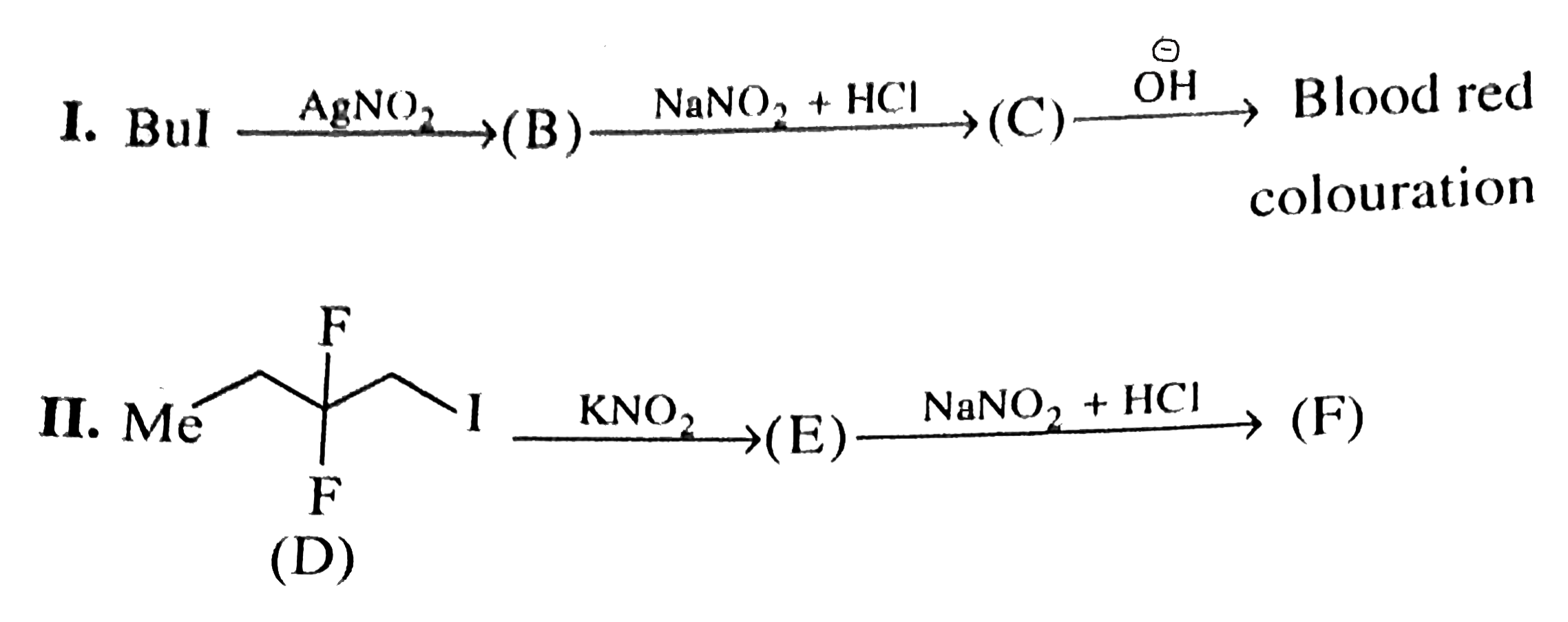
Compound (B) is:
Bu−NO2
Bu−O−N=0
Both
None
The correct Answer is:a
RX in (I) gives R−NO2 while in (II) it gives R−O−N=O
(For explanation, see Solved Example 11.10)
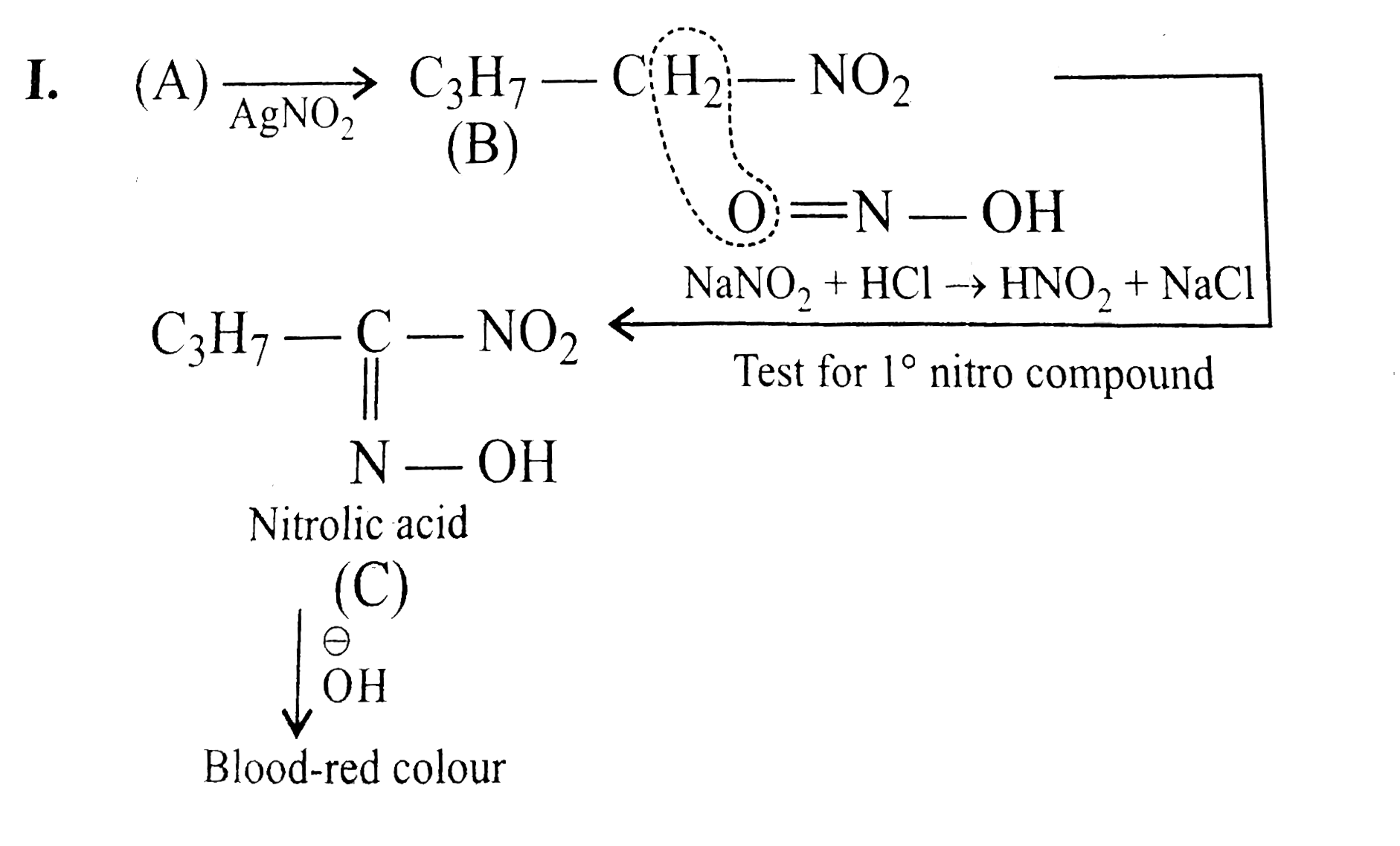
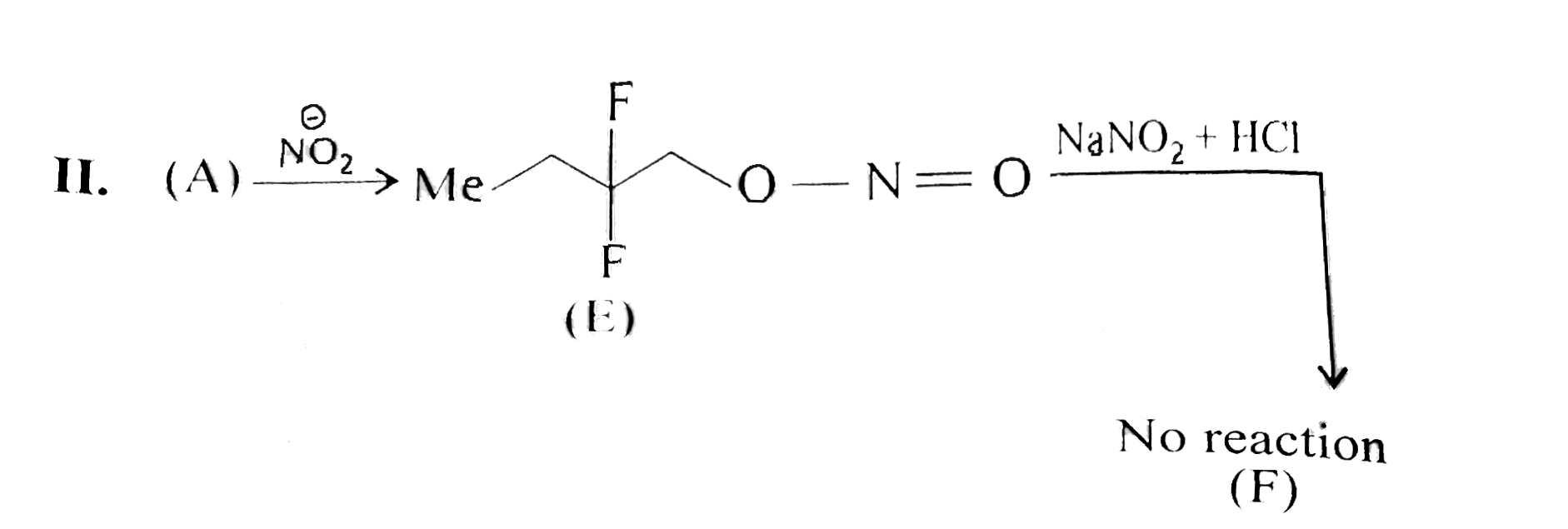
Topper's Solved these Questions
- AROMATIC COMPOUNDS AND ALKYL AND ARYL HALIDES BOOK - CENGAGE CHEMISTRYCHAPTER - AROMATIC COMPOUNDS AND ALKYL AND ARYL HALIDES EXERCISE - Exercises Multiple Correct
35 Videos
- AROMATIC COMPOUNDS AND ALKYL AND ARYL HALIDES BOOK - CENGAGE CHEMISTRYCHAPTER - AROMATIC COMPOUNDS AND ALKYL AND ARYL HALIDES EXERCISE - Exercises Multiple Correct Answers Type
12 Videos
- AROMATIC COMPOUNDS AND ALKYL AND ARYL HALIDES BOOK - CENGAGE CHEMISTRYCHAPTER - AROMATIC COMPOUNDS AND ALKYL AND ARYL HALIDES EXERCISE - Exercises Linked Compreshension Type
11 Videos
- APPENDIX INORGANIC VOLUME 2BOOK - CENGAGE CHEMISTRYCHAPTER - APPENDIX INORGANIC VOLUME 2EXERCISE - Short Answer Type
179 Videos
- BIOMOLECULESBOOK - CENGAGE CHEMISTRYCHAPTER - BIOMOLECULESEXERCISE - Exercises Archives (Analytical And Descriptive)
8 Videos
Similar Questions
Knowledge Check
An organic compound (A) reacts with methyl magnesium iodide to form an addition product which on hydrolysis forms the compound (B). Compound (B) gives blue colour salt in Victor Meyer's test.The compounds (A) and (B) are respectively :
Aacetaldehyde, tertiary butyl alcoholBacetaldehyde, ethyl alcoholCacetaldehyde, isopropyl alcoholDacetone, isopropyl alcohol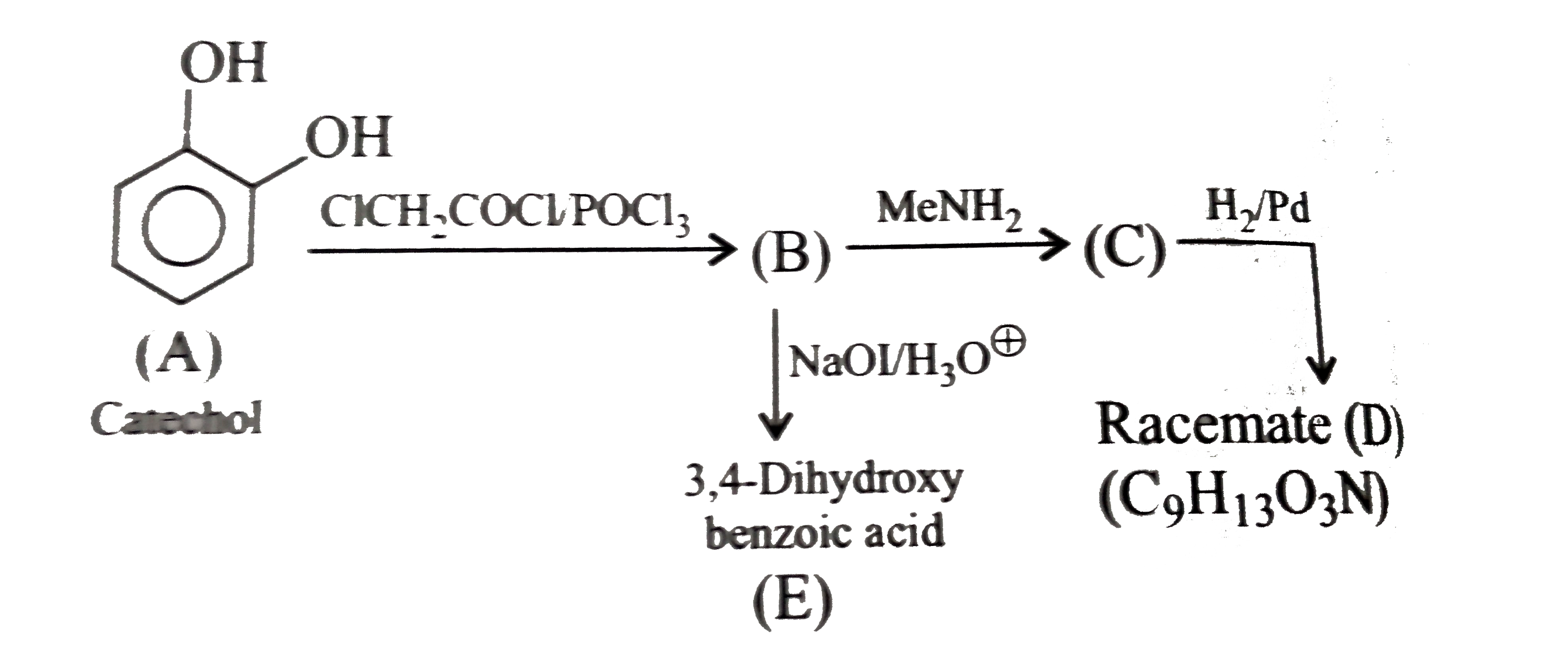
which statement is wrong about the compound (B) ?A(B) is obtained form (A) by acylation of actived ring at para-position to one of the (OH) groups.B(B) is obtained form (A) by esterification of one of the (OH) groups.C(B) is obtained form (A) by alkylaiton in the actived ring at para-position to one of (OH) groups.D(B) is obtained form (A) by esterification of both (OH) groups.A compound (A) is formed by the reaction of ethylene with bromine which on reacting with aqueous KOH gives a compound (B). The compound (B) can also be prepared by the reaction of ethylene with the following:
ABaeyer’s reagentBOxygen in the presence of silver catalyst and then acidic hydrolysisCperformic acid and the product undergoes acidic hydrolysisDAll of the above
An organic compound A reacts with PCl5 to give compound B. Compound B reacts with Na/ether to give n-butane. What are compounds A and B ?
View SolutionAn organic compound A reacts with methyl magnesium iodide to form an addition product which on hydrolysis forms the compound B. Compound B gives blue colour salt in Victor Meyer's test. The compounds A and B respectively are
View SolutionKetone (A) NH2OH.HCl−−−−−−−−→ (B) H⊕−−→

The ketone (A) and compound (B), respectively, are:
Ketone (A)
I.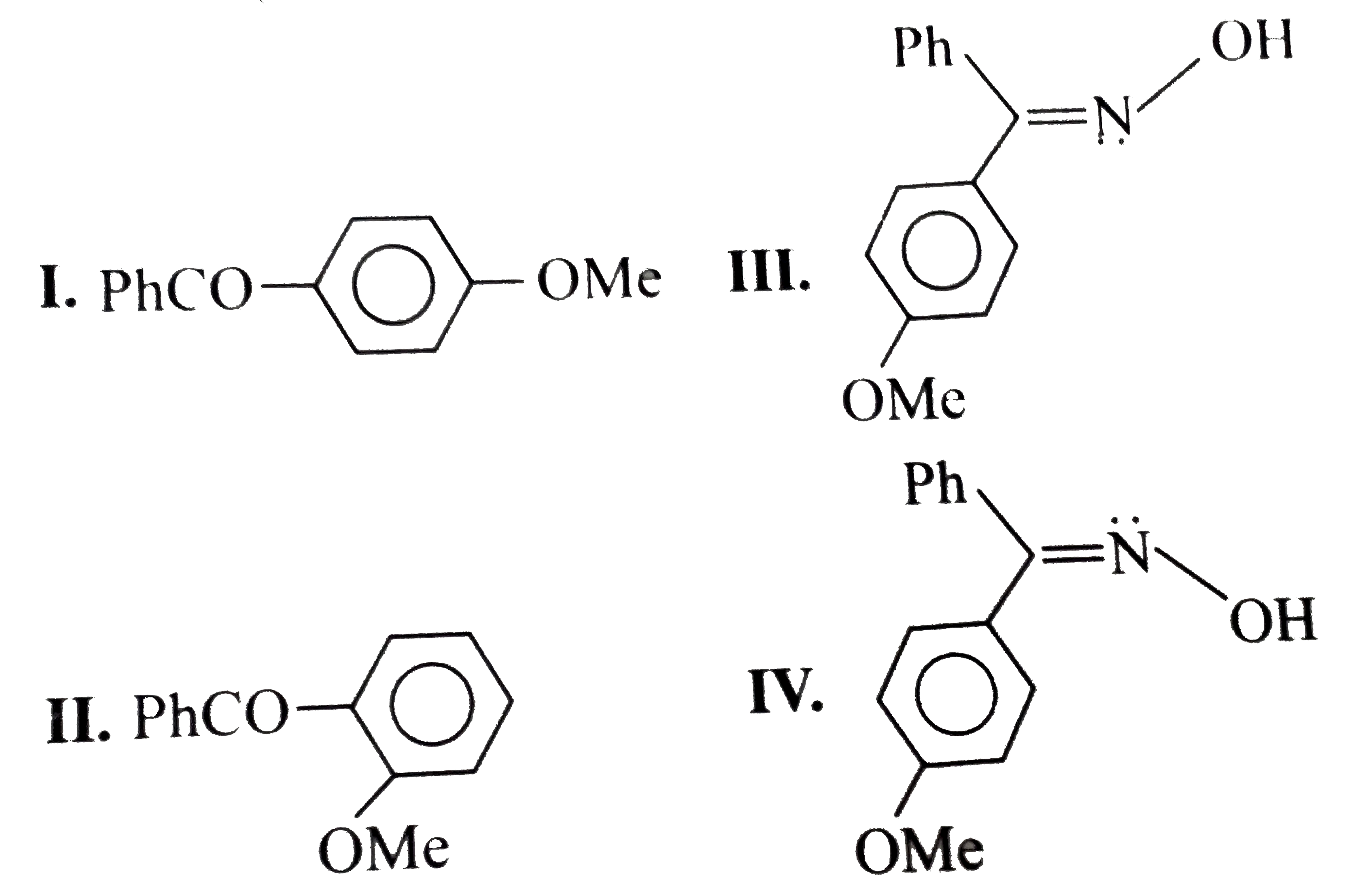
Compound (B)
View SolutionStatement I: Trimethyl ammonium hydroxide (compound A) is a weaker base compared to tetramethyl ammonium hydroxide (compound B) .
Statement II : The release of OH− from (compound B) is faster than that from (compound A) due to presence of hydrogen bonding in (compound A) and absence of such bonding in (compound B).
View Solution
Find structure of compound B:
View Solution

